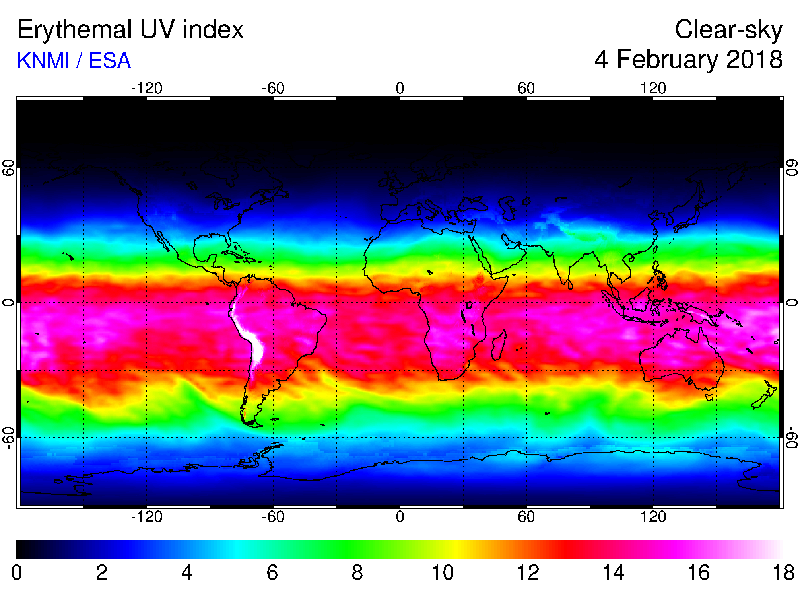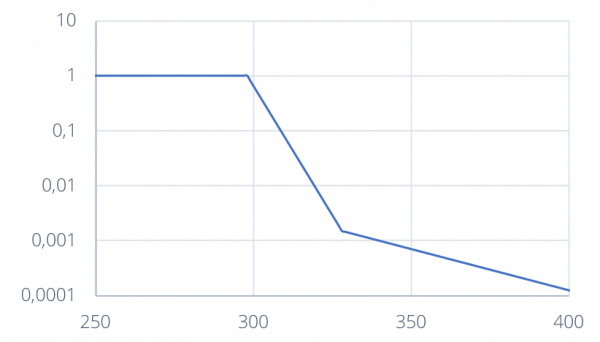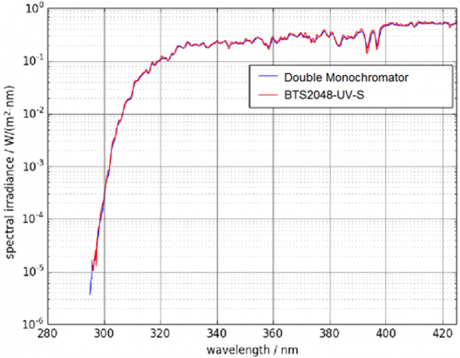
Measurement of Solar Irradiance to Calculate the UV Index
The global solar UV index [1], UVI, is an internationally recognised measure primarily intended to inform the public about UV radiation health risks and sun protection. The UVI uses simple integer values, typically 0 to 11+, to describe the level of solar UV radiation at the Earth’s surface. The potential for damage to the skin and eyes increases and the time it takes for harm to occur will decrease as the UV index value increases. UVI values change continually throughout the day and vary widely depending on location [2] and the time of year. Daily histories and forecasts of UVI are generally reported for maximum values i.e. clear sky conditions at the local solar noon, when the Sun is highest in the sky.
Local UVI can be most accurately determined with measurement data from a suitably configured spectroradiometer. This is especially important to extend the network of simply integral measuring UVI index devices which might have larger errors due to spectral mismatch correction problems. A high end spectroradiometer like the BTS series can be a reference for such devices.
"The BfS at the Schneefernerhaus - measurement of UV radiation at an altitude of 2666 m"
| Exposure risk | UVI Range |
| Low | 0 – 2 |
| Moderate | 3 – 5 |
| High | 6 – 7 |
| Very High | 8 – 10 |
| Extreme | 11 + |
UVI Exposure categories
Absolute solar UV radiation levels on the ground are measured in terms of W/m2, the radiometric measure of irradiance. The CIE erythema action spectrum [3] models the tendency of caucasian skin to sunburn (erythema). UVI is derived from the effective erythema irradiance which is determined by integrating the actual UV irradiance, weighted by the CIE erythema action function. A UVI value of 1 equates to an effective erythema irradiance of 25 mW/m2.

CIE 1998 Erythema Action Spectrum
It is not possible to implement the erythema function very precisely with filter based broadband radiometers due to its wide dynamic range and steep decline in effectivity of more than 3 decades over a narrow spectral range. Consequently, public health and other research applications are best served by spectroradiometric measurements of solar irradiance. The resulting spectral irradiance data, W.m-2.nm-1, can be weighted by the exact erythema function to provide a precise evaluation of the effective erythema irradiance and hence UVI.
The extremely large intensity difference between the irradiance in the ultraviolet region and longer wavelengths within the solar spectrum is also a challenge for the spectroradiometer itself. Inevitably, some of this visible and near infrared radiation is ‘scattered’ within the instrument and may be erroneously detected as if it were UV radiation. Even seemingly negligible stray light becomes significant when weighted by the erythema function. Therefore, spectral measurements of UV solar irradiance have been made conventionally with double monochromator based spectroradiometers, due to their excellent scattered light rejection specification.

Comparison of solar measurements with BTS2048-UV-S and a double monochromator.
However, with its contemporary, CCD-based UV spectroradiometers BTS2048-UV-S (laboratory version) and BTS2048-UV-S-WP (weatherproof version) , Gigahertz-Optik GmbH offers a compact and cost-effective alternative [4] [5]. For more general purpose use the XD-9506 broadband radiometric detector with effective erythema irradiance responsivity is also available. The BTS2048-UV-S-WP series has been successfully validated according to WMO and in comparison to an Brewer in [4] and [6].
References
[1] WHO Global Solar UV Index – Practical Guide
[2] WHO Typical UVI values worldwide
[3] ISO 17166:1999(E)/CIE S 007/E-1998, “Erythema Reference Action Spectrum and Standard Erythema Dose”